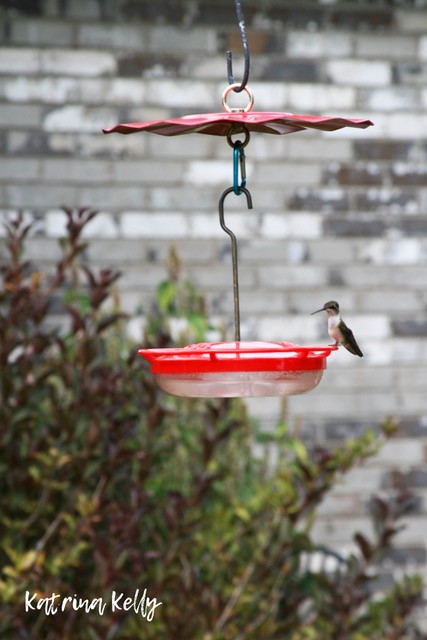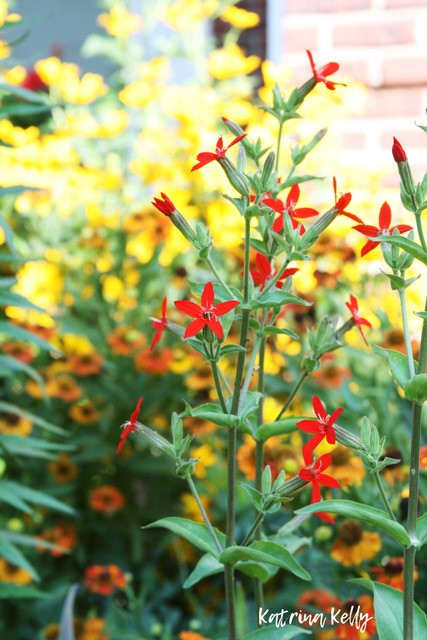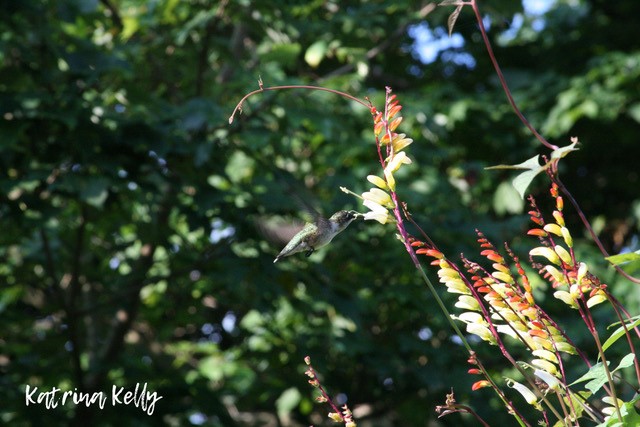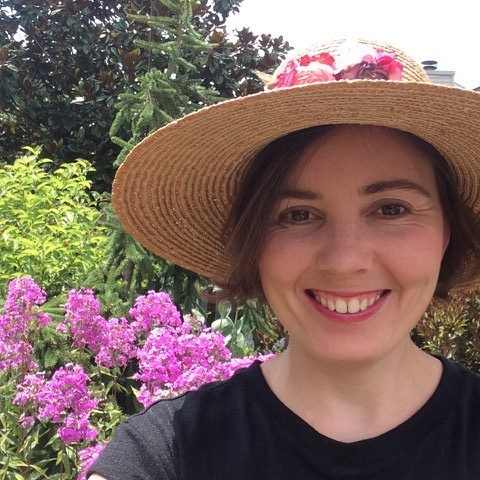By Katrina Kelly
Hummingbirds are fun birds to watch flying through the garden. There is something very intriguing about them that draws our attention. Maybe it’s that they are small yet strong, fast flyers, and hover in midair to drink nectar from flowers. It’s no wonder so many gardeners desire to draw them nearer by planting a hummingbird garden.

In my own garden, I like to plant both native and non-native flowers to attract them. I have been quite surprised to see what flowers the hummingbirds like. It is true hummingbirds are very attracted to the color red, but they are attracted to other colors as well. They are also typically attracted to plants that have tubular shaped flowers, but not always. There are some native plant choices that I’d consider necessary in any hummingbird garden.
One of the best plants for a hummingbird garden are the bee balms (Monarda). The most common bee balm you find in home gardens is red bee balm (Monarda didyma) and its cultivars. This species of bee balm likes average to moist soils. Its cousin, wild bee balm (Monarda fistulosa) also attracts hummingbirds and likes average to dry soils. For the hummers that are traveling through in spring, try attracting them with Bradbury bee balm (Monarda bradburiana). It flowers earlier in the season than the other bee balms. It is a shorter plant, so it is excellent for more compact garden spaces.
The native red honeysuckle vine (Lonicera sempervirens) is also an easy hummingbird attractor. Its long red tubular flowers bloom nearly all summer. This vine needs some room to grow, so plan to grow it on a good-sized trellis or arbor.
One other native plant not seen as commonly in home gardens is hoary skullcap (Scutellaria incana). I have this planted near my hummingbird feeder, and the hummingbirds cannot get enough of this plant. It has purple flowers that flower nearly all summer, which is another great reason to plant it. It does like to spread by seed, so if you want to reduce its spread, just remove the ripe seed heads in late summer and fall.

One of my favorite plants that attracts hummingbirds is the native blue sage (Salvia azurea). It flowers later in the summer and will continue into fall, so it is a great nectar source for hummingbirds as they prepare for their fall migration. It’s a tall and slender plant, and one of the few flowers that has a true blue flower. Other notable native plants that attract hummingbirds are royal catchfly (Silene regia), fire pink (Silene virginica), Indian pink (Spigelia marilandica), tall phlox (Phlox paniculata), beardtongue (Penstemon), wild columbine (Aquilegia canadensis), and cardinal flower (Lobelia cardinalis).
There are also many non-native annual flowers that attract hummingbirds. I enjoy planting many of these around my patio spaces to encourage hummingbird visitors to the garden and the feeder near my patio. Some of my favorites are verbena, pineapple sage, lantana, tomatillo, annual salvias, Mexican sunflower, and Spanish flag vine. Many of these plants are native to Central and South America, so hummingbirds are familiar with them from their southern migration.

Hummingbirds love to take a rest and perch, so they will appreciate something to rest on near your feeder or hummingbird garden. It’s also a great opportunity to watch the hummingbirds or take photos. I once watched a hummingbird sit on the perch I have near my feeder take a bath in the summer rain.
To attract hummingbirds throughout the year, plant your hummingbird garden with a diversity of plants that will flower throughout the season. Planting them in a grouping together will encourage the birds to visit your garden routinely and provide more opportunities to watch them all summer.

Katrina Kelly is a native to Lexington, Kentucky. She is a graduate of the University of Kentucky and has a degree in Landscape Architecture and Music. She is the owner and solopreneur of EARTHeim Landscape Design in Lexington, which focuses on creating unique garden designs with native plants and backyard homesteads. Her interest in native plants began when she volunteered at Salato with Mary Carol Cooper in 2005. She is a board member of the Wild Ones organization in Lexington. In the small amount of time she is not thinking about gardens or gardening, she enjoys photography, writing, science, fitness and nutrition, and building or crafting things around the home.
